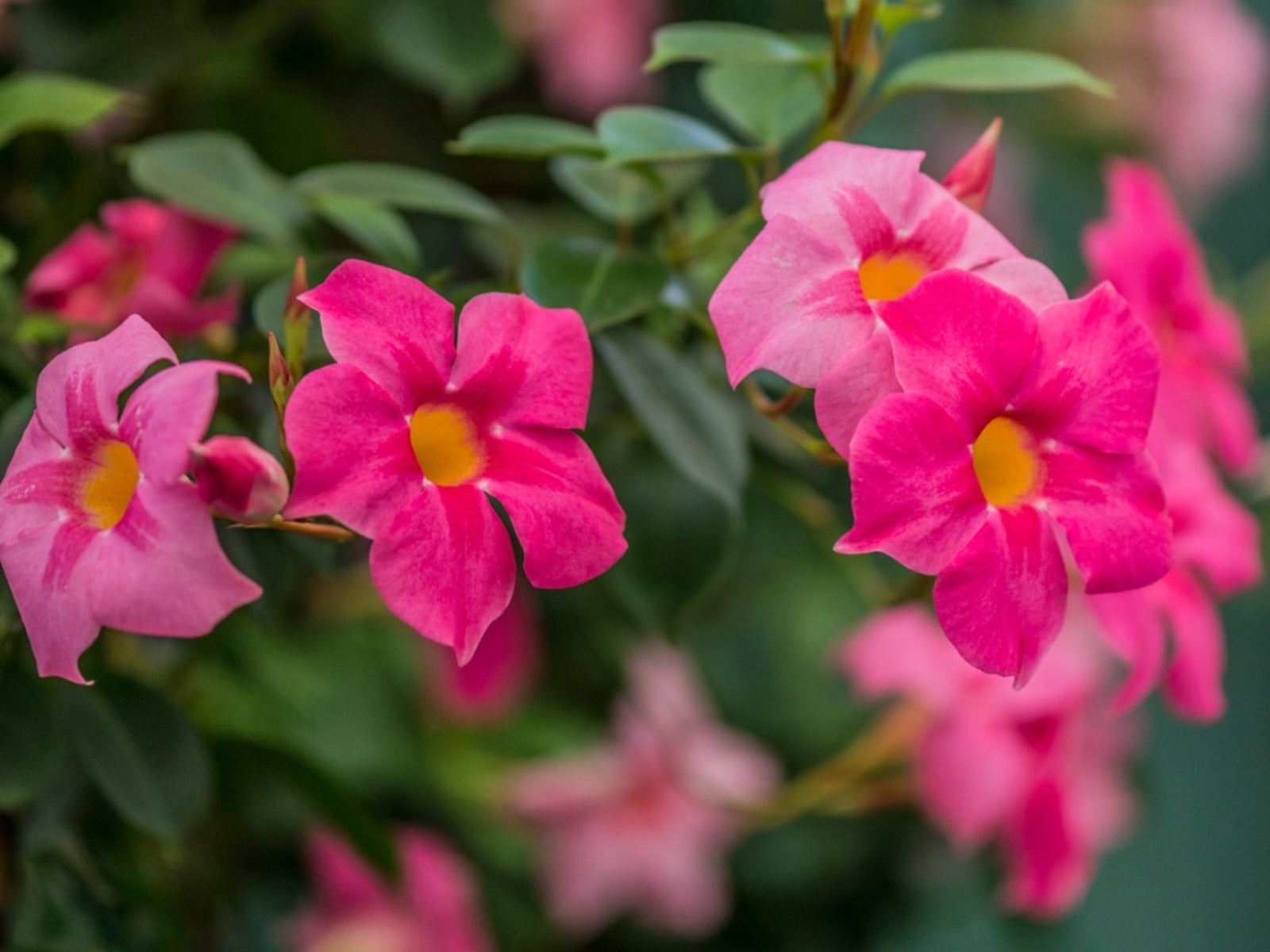Mandevilla Plant Tubers: Propagating Mandevilla From Tubers


Mandevilla, formerly known as dipladenia, is a tropical vine that produces an abundance of big, showy, trumpet-shaped blooms. If you’re wondering how to grow mandevilla from tubers, the answer, unfortunately, is that you probably can’t. Experienced gardeners have found that mandevilla (dipladenia) tubers function by storing food and energy, but don’t appear to be part of the plant’s direct reproductive system. There are several easy ways to start a new mandevilla plant, including seeds and softwood cuttings, but propagating mandevilla from tubers probably isn’t a viable method of propagation. Read on to learn more about mandevilla plant tubers.
Do Mandevillas Have Tubers?
Mandevilla plant tubers are thickened roots. Although they resemble rhizomes, they are generally shorter and plumper. Mandevilla plant tubers store nutrients that provide energy for the plant during the dormant winter months.
Storing Mandevilla Tubers for Winter isn’t Necessary
Mandevilla is suitable for growing year round in USDA plant hardiness zones 9 through 11. In colder climates, the plant needs a little help to get through the winter. It isn’t necessary to remove mandevilla plant tubers before storing the plant for the winter months. In fact, the tubers are necessary for plant health and shouldn’t be excised from the main plant. There are a couple of easy ways to care for a mandevilla plants during the winter months. Trim the plant down to about 12 inches, then bring it inside your home and place it in a warm, sunny location until the weather warms up in spring. Water the vine deeply about once a week, then let the pot drain thoroughly. Water again when the surface of the soil feels slightly dry. If you don’t want to bring the plant indoors, cut it back to about 12 inches and place it in a dark room where temperatures remain between 50 and 60 F. (10-16 C.). The plant will go dormant and needs only a light watering about once every month. Bring the plant to a sunny indoor area in spring, and water as directed above. Either way, move the mandevilla plant back outdoors when temperatures are consistently above 60 F. (16 C.).
Sign up for the Gardening Know How newsletter today and receive a free copy of our e-book "How to Grow Delicious Tomatoes".

A Credentialed Garden Writer, Mary H. Dyer was with Gardening Know How in the very beginning, publishing articles as early as 2007.